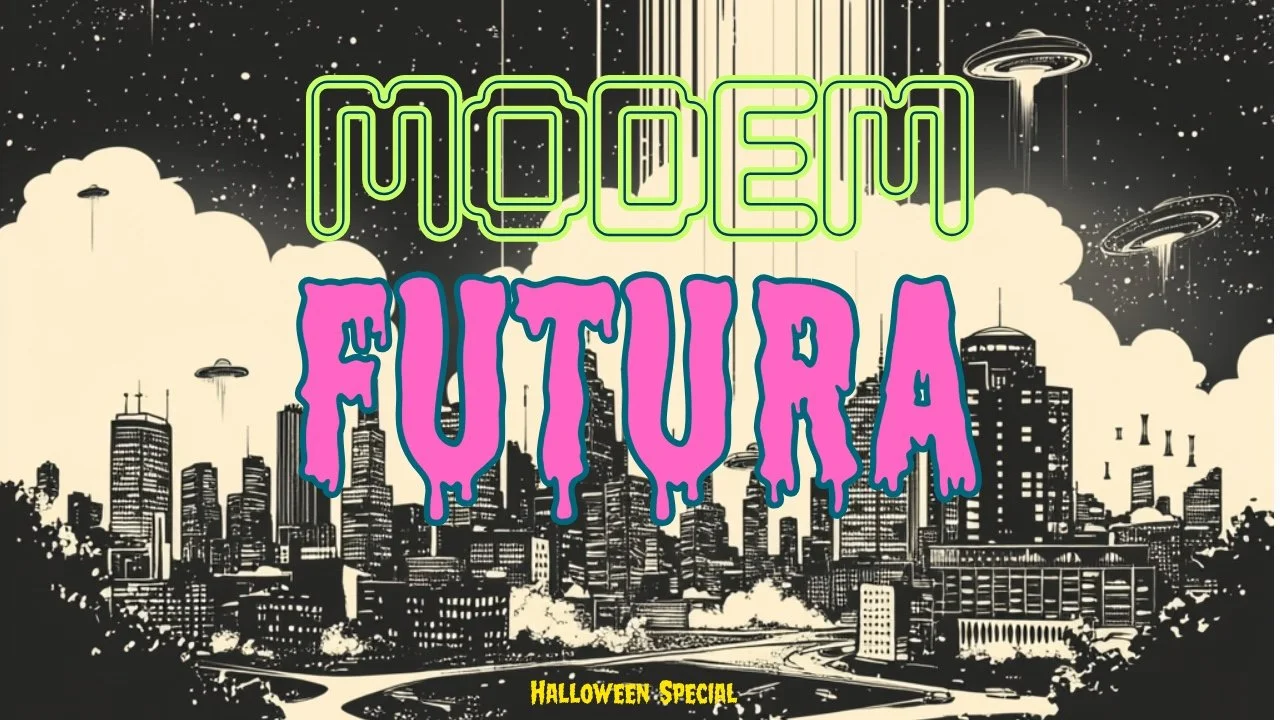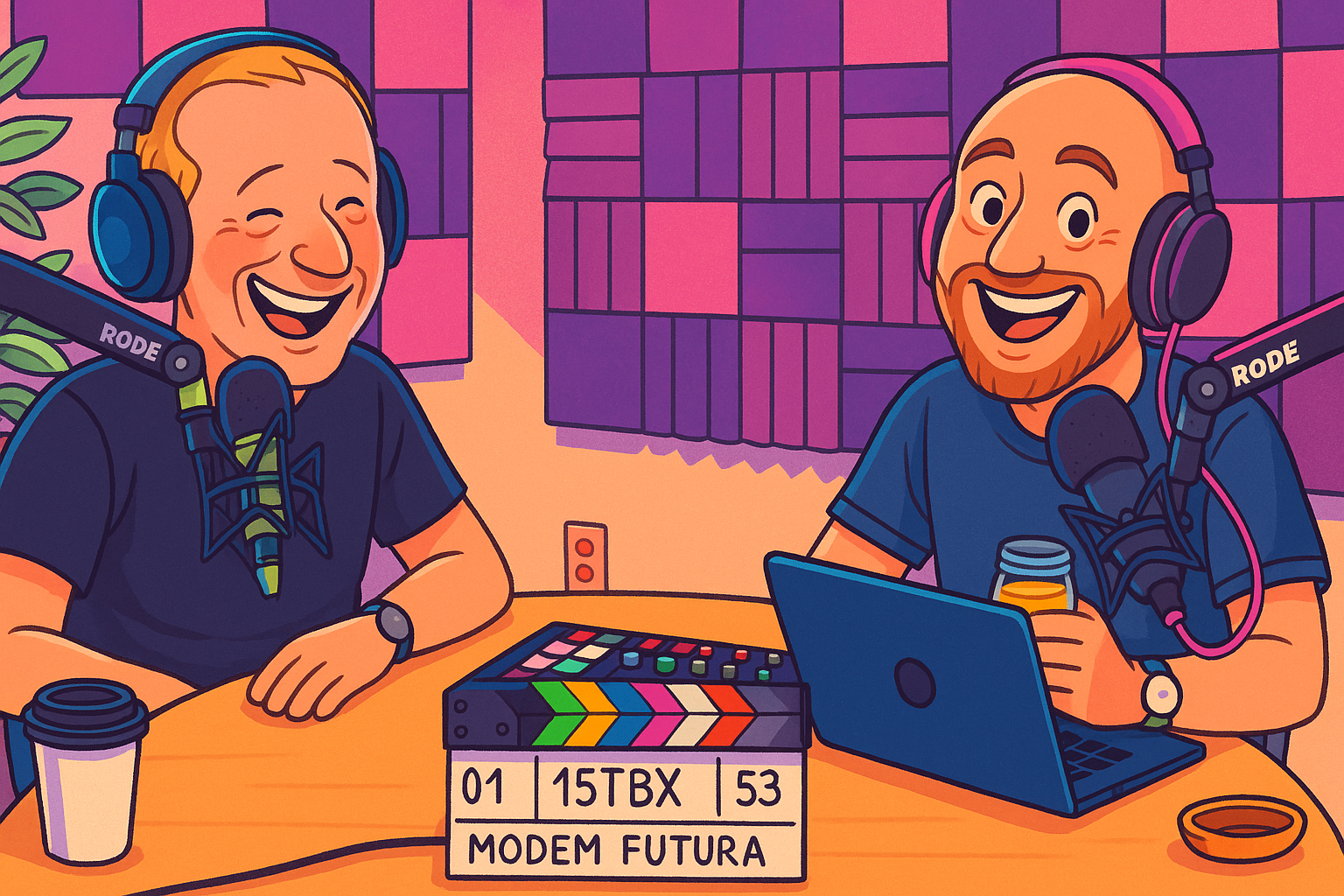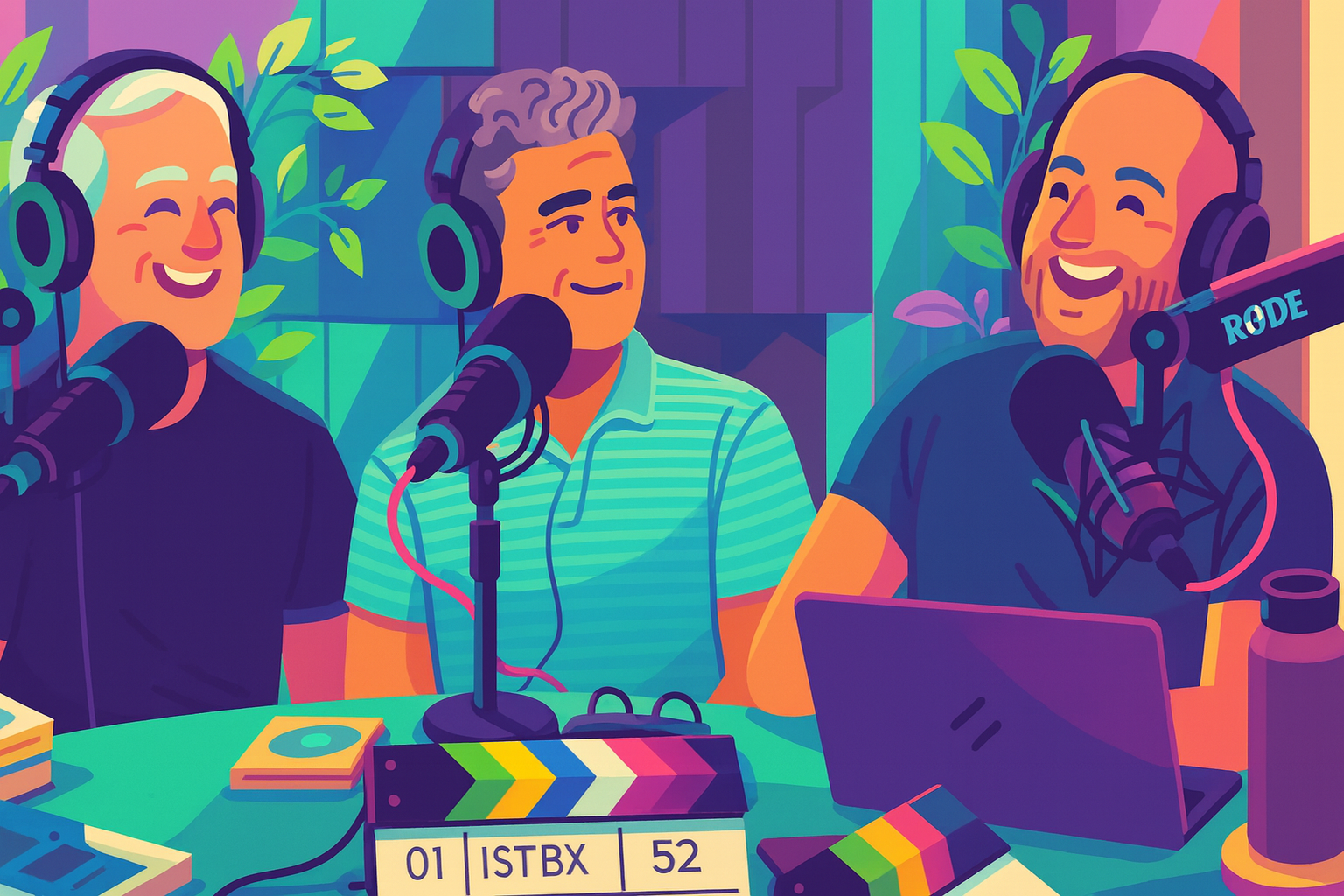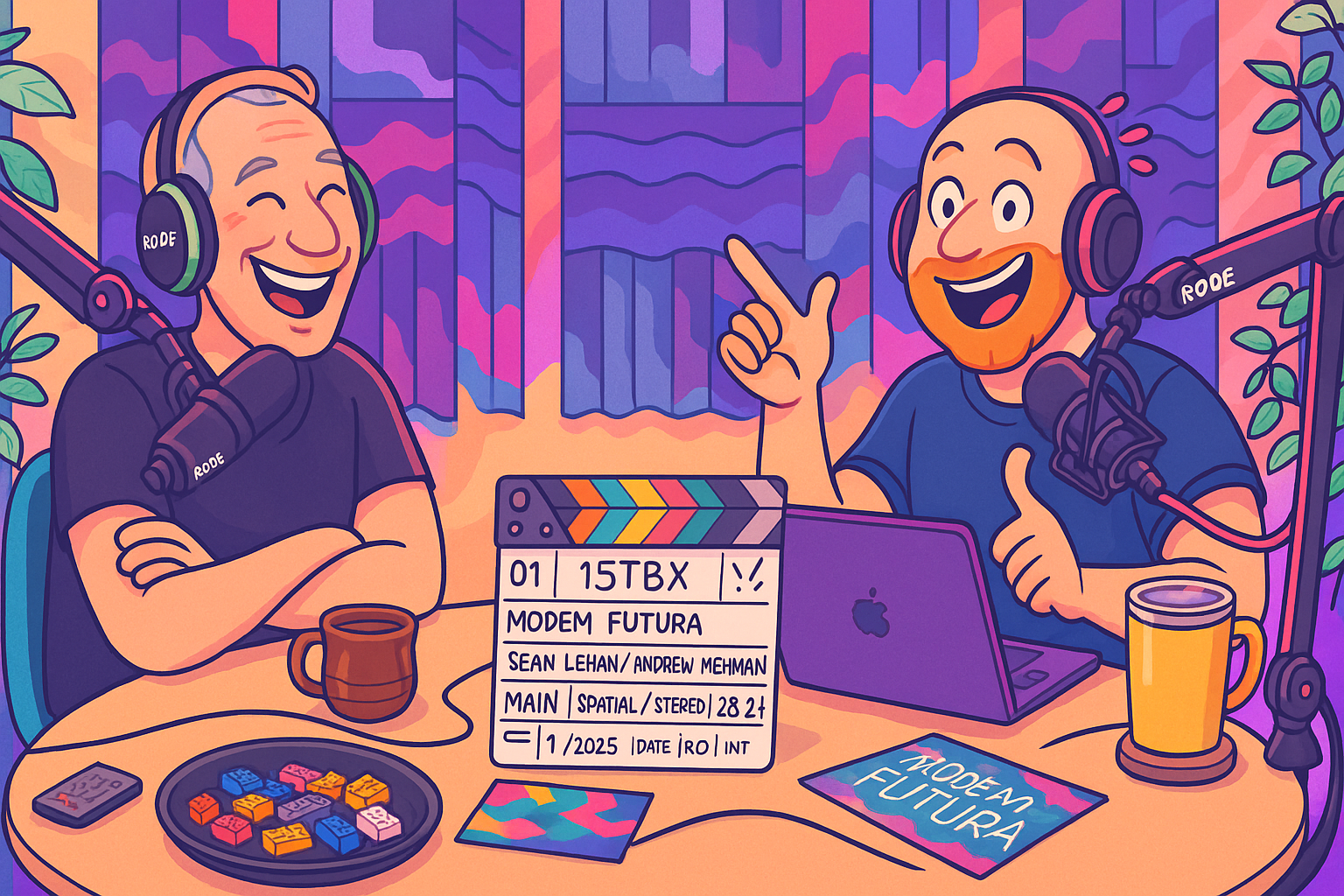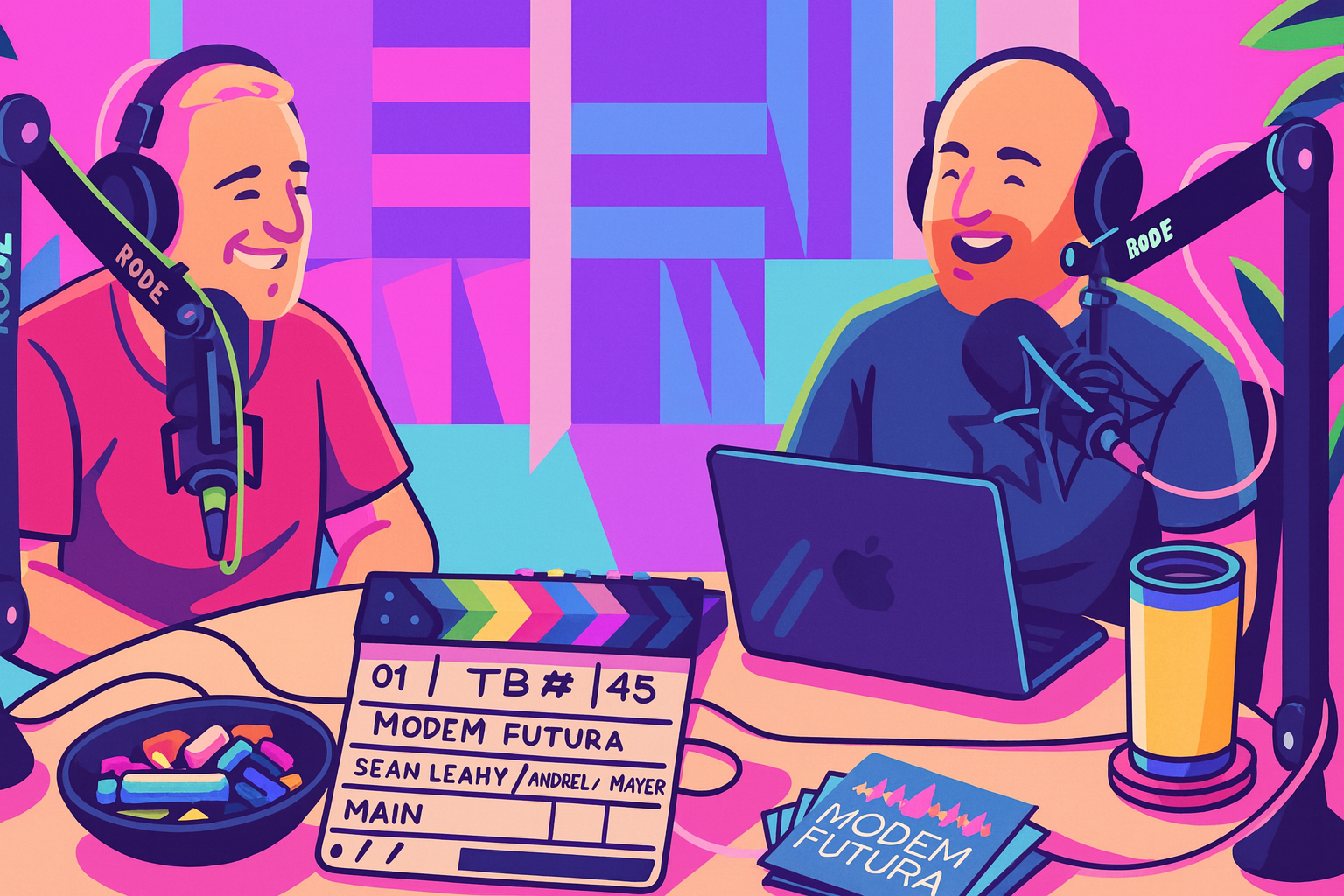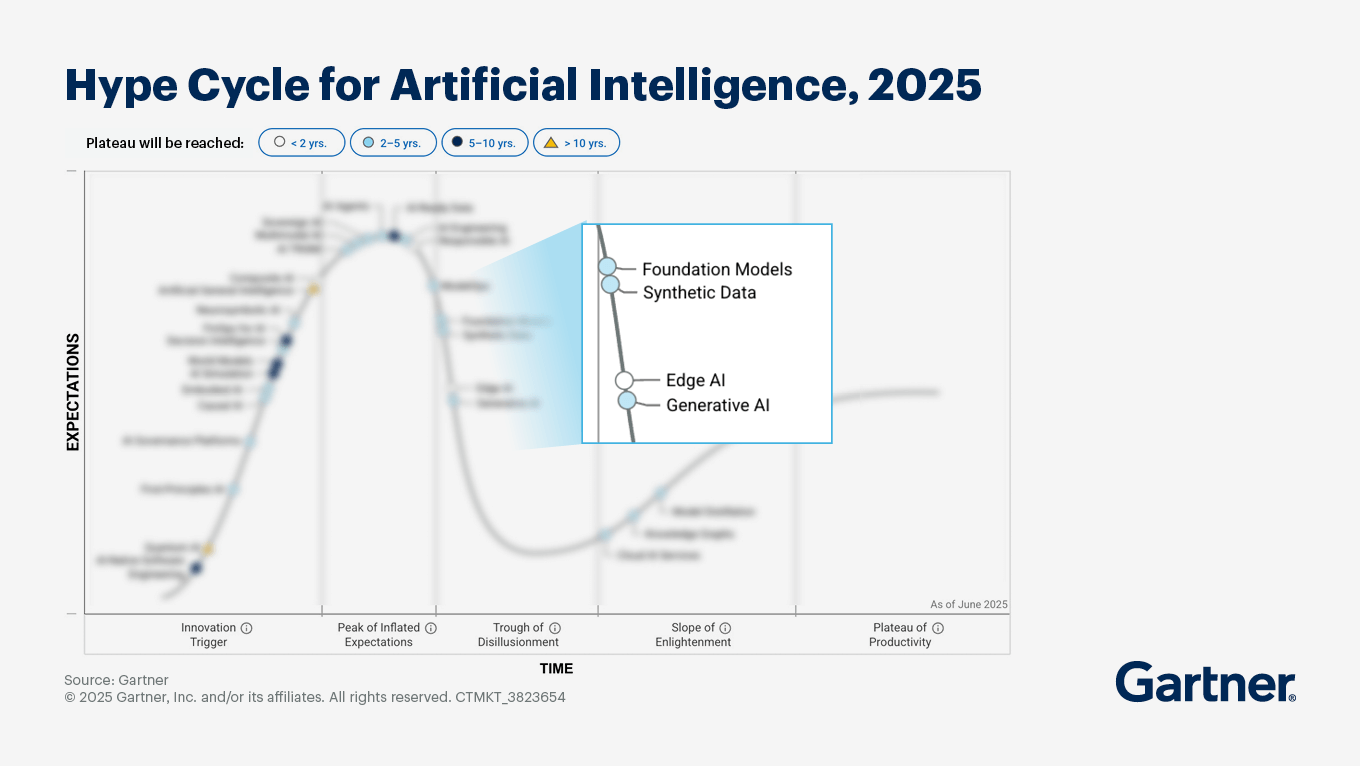Just a couple of guys wearing nerd helmets and talking about the future of tech.
Inside Spatial Computing: Living (and Working) with Apple Vision Pro
e finally did it — we recorded inside Apple Vision Pro.
In this new episode of Modem Futura, Andrew Maynard and I decided to take spatial computing off the keynote stage and into real life — from multi-monitor workflows and long-haul flights to immersive video, panoramic memories, and even telepresence “personas.” We wanted to know: is this the start of a new computing era, or simply a beautiful distraction in search of a use case?
What we discovered surprised us.
Apple’s Vision Pro doesn’t want to be “VR.” It’s spatial — a computer that understands the world around you. Through pass-through video, eye-tracking, and hand-gesture control, it creates a workspace that’s not just 3D but responsive to you. One look or small pinch replaces the keyboard and mouse. It’s impressive, sometimes uncanny, and often quietly magical.
But behind the magic are deep questions about comfort, value, and human need. The headset’s design reveals how far we’ve come in rendering, latency, and foveated focus — and how far we still are from true wear-all-day computing. The device itself sparks larger conversations: What does “presence” mean when you can blank out reality at will? How will social norms adapt when everyone’s wearing cameras? And where does accessibility fit in when interaction becomes multimodal — eyes, hands, voice, and environment all working together?
Want to see what we've been up to? Here you can see a collection of Spatial videos of our podcast - these were all recorded using a 3-camera multicam setup each filming in Spatial video formats.
One of the biggest challenges at the present for spatial video (a deep dive for later) is that in addition to few people having headsets as compared to smartphones for example, most video platform services do not provide a way to consume Spatial video - including Apple's own Vision OS of all things. Yes you can send a video file (these are massive btw - in the order of 9-20GB each) - but at present there isn't an Apple supported cloud based video viewer to which you can watch Spatial videos posted by your friends and family etc. Personally, I really hope that YouTube will start to allow the playback of Spatial videos (assuming they will put an officially supported YouTube app on the Apple Vision Pro of course).
We also talk about what comes after the headset. Think of a layered ecosystem:
Audio AR through your earbuds for subtle ambient context.
Lightweight AR glasses for glanceable, social interaction.
Full headsets for immersive creativity, co-presence, and exploration.
Rather than a single “device to rule them all,” spatial computing might evolve into a stack of experiences that adapt to how human attention, comfort, and curiosity really work.
It’s easy to be dazzled by tech specs, but the future of spatial computing depends less on what’s rendered and more on what it means to be present in digital space. That’s why we’re inviting developers, designers, and curious explorers to join us — to prototype, play, and imagine what spatial experiences could look like when they’re built for humans first.
Subscribe and Connect!
Subscribe to Modem Futura wherever you get your podcasts and connect with us on LinkedIn. Drop a comment, pose a question, or challenge an idea—because the future isn’t something we watch happen, it’s something we build together. The medium may still be the massage, but we all have a hand in shaping how it touches tomorrow.
🎧 Apple Podcast: https://apple.co/47Arkwv
🎧 Spotify: https://open.spotify.com/episode/3V40dbWcrKZq9RCCmoP7Zh?si=s0CVT5aQS8WJ_CgbfMTBcg
📺 YouTube: https://youtu.be/IF3juEp9l_I
🌐 Website: https://www.modemfutura.com/




